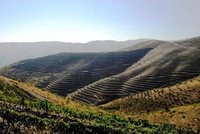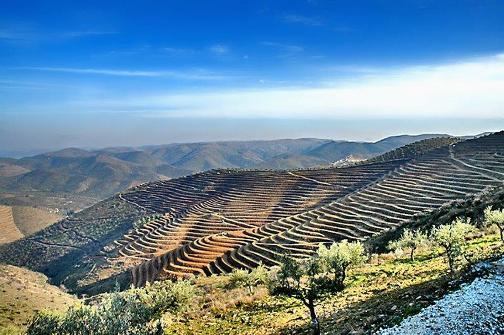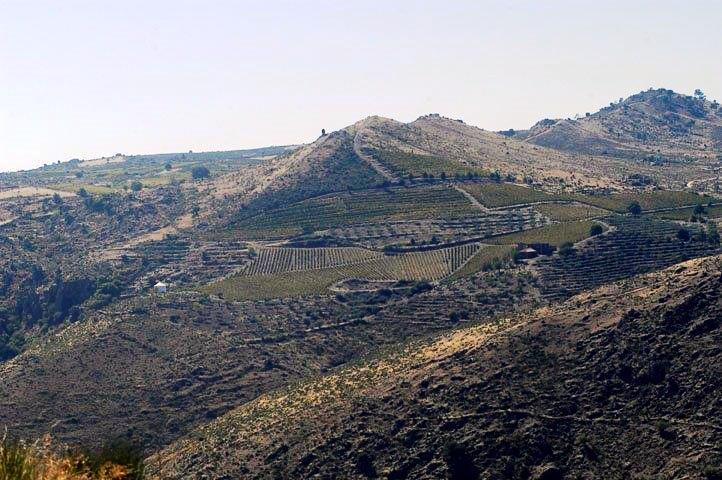organic wine, biodynamic wine, Demeter wine, na... Our organic wines Organic wine Portugal, biodynamic Portugal Douro organic wine
Douro organic wine

Viticulture on the Douro, the river that rises in Spain and flows through the north of Portugal in a deep valley in an east-west direction, has been practiced there for more than 2,000 years.
The wine-growing region became famous for the port wine, which was named after the city of Porto, although the wine is produced approximately 80 km upriver and is only shipped to other countries from the port of the city of Porto.
It is a wine with varying levels of residual sugar that is stabilized with brandy. Port wine is popular in Great Britain, where it is served as an aperitif or as a dessert wine.
To order the wines, please scroll to the bottom

The scope and boundaries of the Douro wine region were clearly defined in 1756. It covers around 40,000 hectares, 3/4 of which is used for the production of port wine and around 1/4 for Douro DOC and Douro Regional. On the map above, the Douro region is shown in yellow. The western part of it is called Baico Corgo, the center Cima Corgo and the eastern part Douro Superior.

Since December 14, 2001, the Douro wine region has been declared a World Heritage Site by UNESCO. This includes the Côa National Park in the upper reaches Wine-growing area around Pinhão on the lower reaches and the old town of Porto at the mouth of the Rio Douro into the Atlantic.
The Douro wine-growing region has been the first demarcated region in the world since 1756 and the most famous Portuguese quality wine region.

The climate is continental with Mediterranean and Atlantic influences. The amount of precipitation is low, the soils are barren and consist of alternating granite, slate and sand. The proximity of the Douro and its tributaries Águeda, Tua, Côa, Sabor, Corgo, Paiva, Tavora, Tâmega and Sousa have a temperature-balancing effect both at altitudes of up to 700 m in the vineyards and in the valleys. Cold nights favor the development of fine fruity components in the grapes, a good level of acidity and tannin. This ultimately creates elegant, rich, storable organic wines with a good structure.
![Biowein [pur] Hartl - organic wine shipper](/WebRoot/Store7/Shops/87b180e2-5584-4f7d-8168-acd5dfe63e0b/Styles/Sharp[3]/logo.png)



